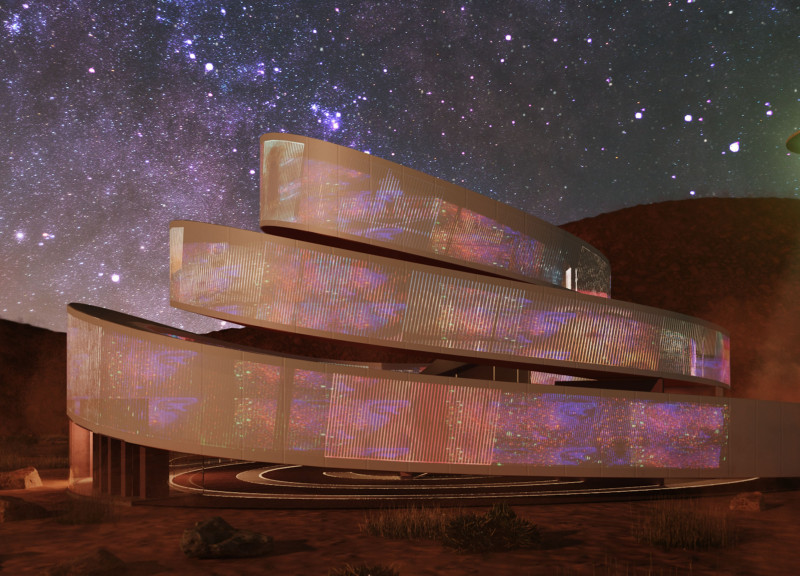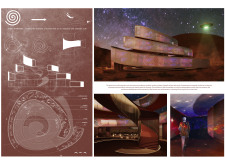5 key facts about this project
At its core, the building serves as a multifaceted community center. It is designed to accommodate various activities, from public meetings and workshops to recreational events and exhibitions. The layout encourages interaction among diverse groups, making it a hub for social and cultural exchange. Key considerations during the design process included optimal spatial flow, privacy, and accessibility, allowing each area to serve its purpose while remaining connected to the overall collective experience of the center.
One unique aspect of this architectural design is its materiality. The project utilizes a combination of locally sourced materials, including sustainably harvested timber, recycled concrete, and glass. This choice not only reduces the carbon footprint associated with transportation but also pays homage to the region’s architectural vernacular. The timber framework not only provides a warm aesthetic but also enhances structural performance, allowing for expansive open spaces without compromising on integrity. The use of glass in strategic locations maximizes natural light, fostering a sense of openness and connection to the outdoor environment.
The design incorporates a range of architectural elements that contribute to its functionality and visual appeal. Large openings in the facade facilitate ventilation and natural light, creating a lively interior atmosphere. These openings are complemented by overhanging eaves that provide shade, reducing energy consumption while enhancing outdoor spaces for community use. Landscaping features, such as green roofs and rain gardens, are strategically placed to manage stormwater runoff and promote biodiversity, further enhancing the project’s sustainability.
Another notable feature is the integration of technology within the structure. Smart building solutions, including energy-efficient systems for heating, cooling, and lighting, are seamlessly woven into the architectural fabric. This not only ensures user comfort but also demonstrates a commitment to energy efficiency and environmental stewardship.
The project's design reflects an understanding of the local climate and topography, drawing inspiration from the surrounding landscape. Designers carefully considered how the building would interact with its environment, placing emphasis on views and minimizing disruption to existing natural features. This thoughtful orientation not only benefits occupants by enhancing their experience of the site but also encourages a broader appreciation for the natural landscape among visitors.
Furthermore, the building’s silhouette is carefully crafted to complement the urban skyline. Its design approaches traditional forms with a modern interpretation, balancing the demands of contemporary architecture with a respect for historical context. This dialogue between old and new is essential, providing a sense of place that resonates with the community.
As exploration of this architectural project continues, it becomes apparent that its design is not merely a response to functional requirements but also a profound commentary on the relationship between architecture and its users. The project stands as a testament to the potential of architectural design to foster community interactions and enhance the quality of life within urban spaces.
For those interested in a deeper understanding of this project, it is recommended to explore architectural plans, architectural sections, and detailed architectural designs. Such insights provide a fuller picture of the innovative ideas that underpin the project and illustrate how these concepts have been effectively translated into tangible form. Making the effort to delve into these elements enhances appreciation for the thought and creativity involved in crafting spaces that not only serve but inspire.























